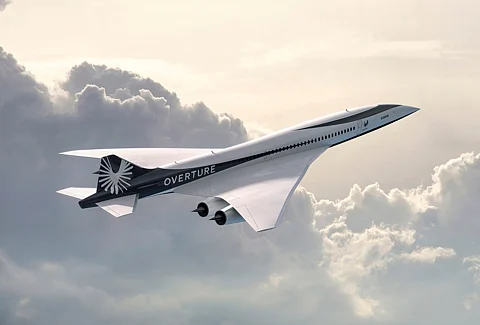

In what aviation aficionados are calling an historic achievement on par with the Wright brothers first flight at Kitty Hawk in 1903, Tuesday marked the first time a privately made aircraft has cracked the sound barrier, and becoming the first civilian aircraft to do so since the last flight of the Concorde in 2003.
High over California’s Mojave Desert, Boom Supersonic’s demonstrator XB-1 — piloted by chief test pilot Tristan ‘Geppetto’ Brandenburg — reached Mach 1.12 at an altitude of 10,750 metres (35,290 feet), following what company officials called a “rigorous” test program.
The achievement was live-streamed over social media in front of hundreds of onlookers in what could only be called a lavish presentation, befitting such an historic occasion.
“This flight demonstrates that the technology for passenger supersonic flight has arrived,” said Boom CEO Blake Scholl.
Despite the unabashed optimism, the shadow of the Concorde disaster loomed over the feat and served as a reminder of the challenges that await the next generation of supersonic air travel.
The Concorde, which entered service in 1976, was an icon of luxury and speed, flying at Mach 2 and halving transatlantic travel times. Yet, high operational costs, environmental concerns, and the tragic crash of Air France Flight 4590 in 2000 that killed 113 people highlighted the risks of supersonic travel.
That disaster, combined with mounting pressure over noise pollution and high ticket prices, ultimately led to Concorde’s demise in 2003.
Boom said it aims to avoid Concorde’s pitfalls with the development of its Overture airliner, designed to carry 64-80 passengers at Mach 1.7 on sustainable aviation fuel (SAF). The company touts innovations such as carbon fibre composites, digitally optimized aerodynamics, and augmented reality systems that were all tested on the XB-1.
Those advancements are intended to address safety, efficiency, and sustainability concerns that plagued the Concorde, it said on its website.
Despite the claims, skeptics question whether Boom can overcome the economic and regulatory challenges that grounded the Concorde. The noise generated by supersonic flight over land remains a contentious issue — especially sonic booms — with international agreements limiting such flights to overwater routes. Additionally, the high costs of production and operation raise concerns about ticket affordability.
Nonetheless, “XB-1’s achievement is a monumental step forward,” said Mike Bannister, former British Airways chief Concorde pilot, who witnessed the fabled aircraft’s rise and fall. “But the lessons of Concorde must not be ignored. Supersonic travel can only thrive if it’s safe, sustainable, and accessible,” he added.
However, Concorde also had significant early interest only to see its fleet reduced to just 14 operational aircraft due to high costs and limited demand.
While Boom’s vision of sustainable, accessible supersonic travel may inspire a new era, history serves as both a guide and a warning. Experts said the path forward will depend not just on technological breakthroughs but also on addressing the economic and environmental realities that define modern aviation.
“Beginning in 1905, the National Aeronautic Association recognized aviation’s most historic events, including breaking the sound barrier in 1947 and the moon landing in 1969. XB-1 has continued to prove that Blake’s dream is in line with the achievements that have come before,” said Amy Marino Spowart, President and CEO of the National Aeronautic Association.
“This flight is a testament to dreaming and doing, which is the heart of the legendary feats of aviation that have gotten us to this day. The future of aviation is here and now. Not only is there hope for faster and better commercial flight, but Boom proves that it can be done sustainably.”
